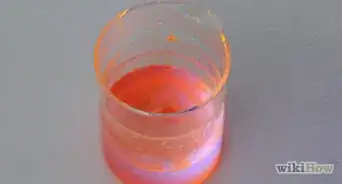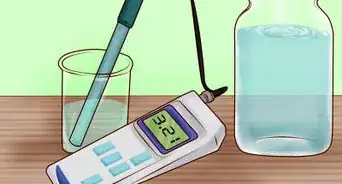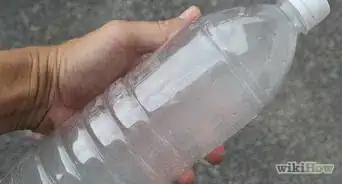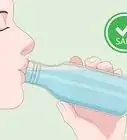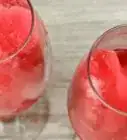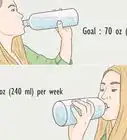This article was co-authored by Meredith Juncker, PhD. Meredith Juncker is a PhD candidate in Biochemistry and Molecular Biology at Louisiana State University Health Sciences Center. Her studies are focused on proteins and neurodegenerative diseases.
There are 8 references cited in this article, which can be found at the bottom of the page.
This article has been viewed 365,865 times.
Supercooling a liquid is when you cool it to below its freezing point without it becoming a solid.[1] Supercooling only works with liquids that have no impurities that can trigger crystallization. Once the liquid is supercooled, you can trigger it to form ice right in front of your eyes. Although it may sound complicated, you can supercool water in your very own home with a few simple steps.
Steps
Using a Bowl of Ice and Salt
-
1Gather the necessary materials. For this method, you will need salt, purified water, a small clean glass or plastic cup, a large bowl, and ice. If you have a thermometer it would also be useful, but not necessary.
- Make sure your glass is very clean; any impurities can cause the water to crystallize into ice before supercooling occurs. Impurities can also lower the freezing point of water.[2]
- The bowl must be large enough to contain the glass and enough ice to submerge the glass.
-
2Fill the cup 1/4 of the way up with purified water. The amount of water added doesn’t have to be exact. Add enough that you will be able to measure the temperature, but not so much that you won’t be able to surround the cup with ice above the water line.[3] Place the cup in the center of the bowl.Advertisement
-
3Fill the bowl with ice. Add enough ice so that glass/cup is completely surrounded by the ice. You want there to be enough ice to go above the water line in the cup.[4]
- Be careful not to drop any ice into the cup of water.
- Covering the cup before you add ice and salt is a good way to prevent accidental contamination.
-
4Sprinkle two tablespoons of salt over the ice. Adding salt to the ice lowers its freezing point. With a lower freezing point, the temperature around the glass can get cooler.[5]
- Again, be careful not to get any salt into the glass/cup.
- At this point you can add a clean thermometer if you have one.
-
5Wait until the thermometer shows the water is below freezing. Because this reaction works faster than the freezer, you’ll want to watch your water carefully. If you have a thermometer. This lets you see exactly when the water is below 0º C (32º F), which is the freezing point of water.
- This process generally takes about 15 minutes, plus or minus a few minutes depending on your personal freezer settings. If you leave the water for too long, it will freeze.
- If you don’t have a thermometer, you can set-up a second bowl with tap water. When the tap water freezes, your purified water should be super-cooled.
-
6Initiate ice crystallization. There are two fun ways to cause the water to freeze: drop a piece of ice into the glass/cup or pouring the water onto a piece of ice. After dropping in the ice, the water should freeze quickly freeze in the glass/cup. This is often called snap freezing.[6] Pouring the water onto ice will cause the water to freeze as you pour.
Using the Freezer
-
1Obtain a bottle of purified or distilled water. You can’t use tap water because it has minerals and other impurities that will trigger ice formation during the cooling.[7] Purified water removes these impurities allowing this experiment to work.
- Water expands as it freezes, so ensure the bottle isn’t completely full before you proceed.
-
2Place the bottle in the freezer. Make sure wherever you put the bottle, it won’t be knocked around if someone else opens the freezer. If possible tell friends or family not to use the freezer during the remainder of the experiment.
- If you live where the temperature outside is below freezing, you can put the bottle of water outside.
-
3Chill the water undisturbed for 2-3 hours. The amount of time needed to supercool the water will vary based on the temperature of your freezer. A good measure is to also put a bottle of tap water in the freezer. Once the tap water is frozen, your pure water should be supercooled and still in its liquid state.[8]
- Starting at 2 hours, check the bottle of tap water every 15 minutes to see when it freezes.
- When the tap water is completely frozen, the pure water will be supercooled.
- If your pure water is also frozen, you may have waited too long, bumped the bottle during the process, or the water wasn’t completely pure.
- Melt the water and try again for a shorter amount of time.
-
4Remove the pure water from the freezer. Carefully take the bottle of water out of the freezer. When liquids are supercooled a quick motion can cause it to crystallize into ice.
-
5Initiate ice crystallization. There are two fun ways to cause the water to freeze: shaking the bottle and pouring the water onto a piece of ice. After shaking the bottle, the water should freeze quickly freeze in the bottle. This is often called snap freezing.[9] Pouring the water onto ice will cause the water to freeze as it hits the ice. As you continue to pour the water will freeze on top of itself.[10]
Expert Q&A
-
QuestionWhat temperature should the water be when it's supercooled?
 Meredith Juncker, PhDMeredith Juncker is a PhD candidate in Biochemistry and Molecular Biology at Louisiana State University Health Sciences Center. Her studies are focused on proteins and neurodegenerative diseases.
Meredith Juncker, PhDMeredith Juncker is a PhD candidate in Biochemistry and Molecular Biology at Louisiana State University Health Sciences Center. Her studies are focused on proteins and neurodegenerative diseases.
Scientific Researcher Water can be supercooled at −48.3 °C/−55 °F.
Water can be supercooled at −48.3 °C/−55 °F. -
QuestionWhat kind of container is best for freezing water?
 Meredith Juncker, PhDMeredith Juncker is a PhD candidate in Biochemistry and Molecular Biology at Louisiana State University Health Sciences Center. Her studies are focused on proteins and neurodegenerative diseases.
Meredith Juncker, PhDMeredith Juncker is a PhD candidate in Biochemistry and Molecular Biology at Louisiana State University Health Sciences Center. Her studies are focused on proteins and neurodegenerative diseases.
Scientific Researcher Because water expands when it freezes, I would opt for any container that has some flexibilityand isn't too rigid.
Because water expands when it freezes, I would opt for any container that has some flexibilityand isn't too rigid. -
QuestionWhat kind of salt do you need for this?
 Community AnswerAny kind of table salt will work.
Community AnswerAny kind of table salt will work.
Warnings
- Don't let it stay in there too long!⧼thumbs_response⧽
- When water freezes it expands, so make sure that the bottle isn't completely full when you put it in the freezer.⧼thumbs_response⧽
Things You'll Need
- Tap water
- Distilled water
- Two water bottles
- Freezer
- Salt
References
- ↑ http://www.esrf.eu/news/general-old/general-2010/supercooling;jsessionid=5141EA5A0B183F530F1DE4D5D034AA79
- ↑ https://astrocampschool.org/cool-water/
- ↑ http://www.sciencebuddies.org/science-fair-projects/project_ideas/Phys_p033.shtml#procedure
- ↑ http://www.sciencebuddies.org/science-fair-projects/project_ideas/Phys_p033.shtml#procedure
- ↑ http://physicsbuzz.physicscentral.com/2014/06/the-science-of-ice-cream.html
- ↑ http://www.sciencebuddies.org/science-fair-projects/project_ideas/Phys_p033.shtml#background
- ↑ http://chemistry.about.com/od/chemistryhowtoguide/a/how-to-supercool-water.htm
- ↑ http://chemistry.about.com/od/chemistryhowtoguide/a/how-to-supercool-water.htm
- ↑ http://www.sciencebuddies.org/science-fair-projects/project_ideas/Phys_p033.shtml#background
About This Article
If you want to supercool water using salt and ice, fill a clean glass 1/4 of the way full of purified water, then place the glass in the center of a large bowl. Add enough ice to the bowl so the glass is completely surrounded, then sprinkle 2 tablespoons of salt over the ice. Take care not to get any ice or salt inside the glass. Wait about 15 minutes, or until a thermometer shows that the water is below 0°F. To crystallize the water, either drop a piece of ice into the glass or pour the water onto ice. You should see ice form almost immediately. To learn tips from our reviewer on how to supercool water in the freezer, keep reading!
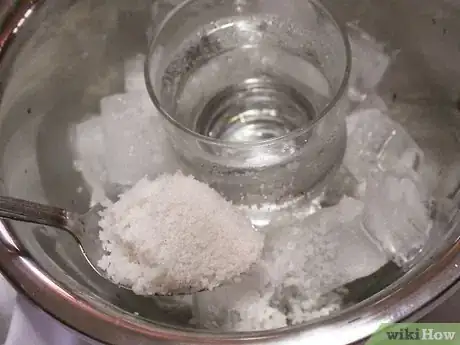
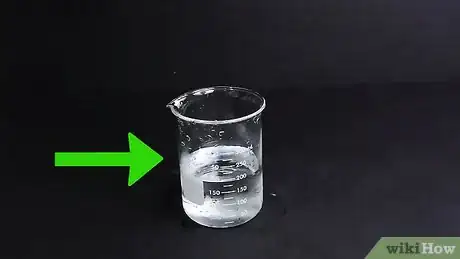
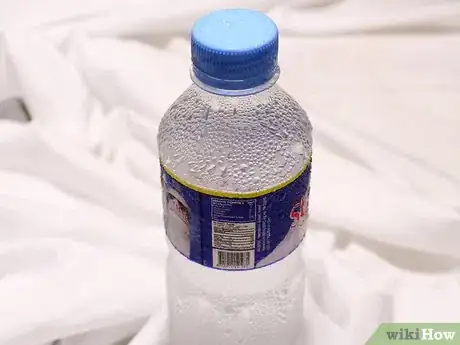
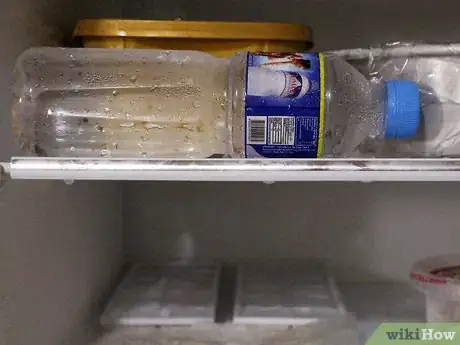
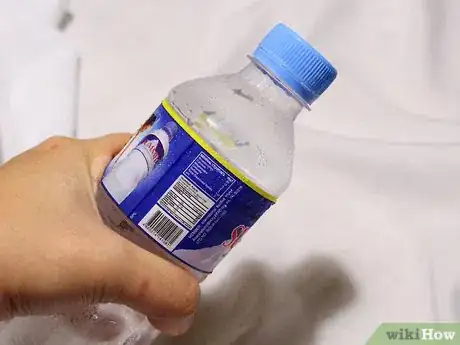
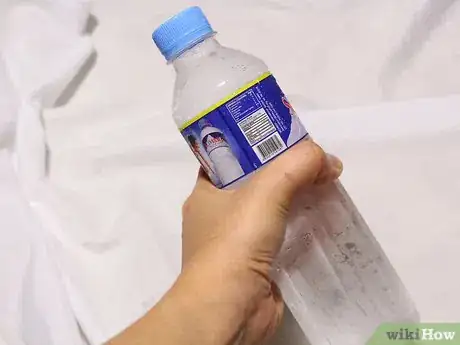
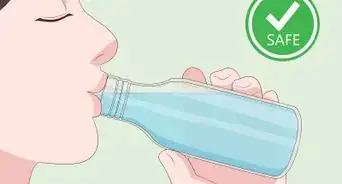
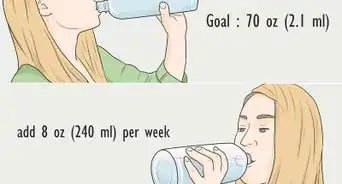
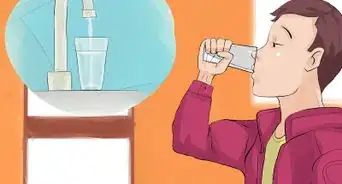
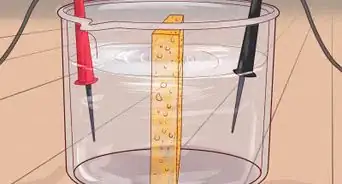
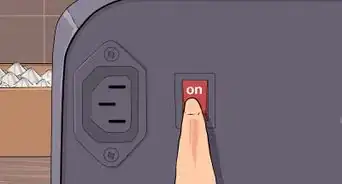
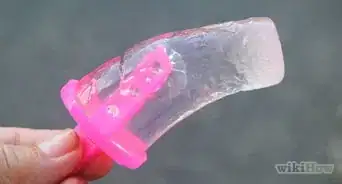
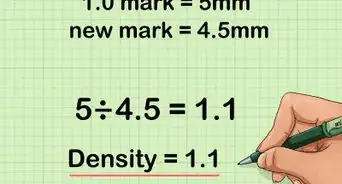
-Step-15.webp)
